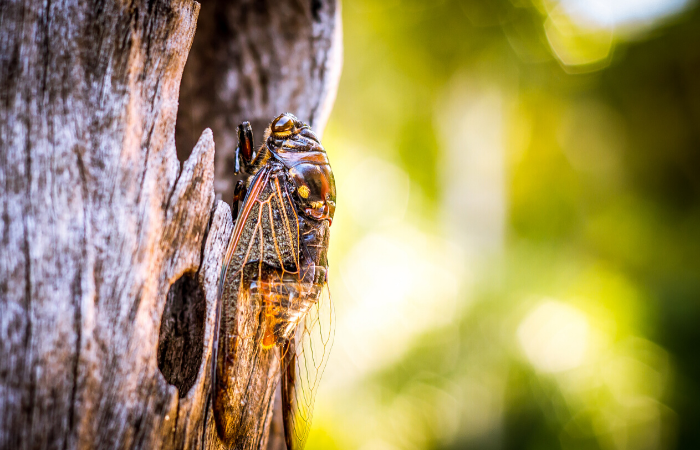If you’ve been tending to your trees, lawn, or garden this spring, you may have encountered your fair share of insects already. One pest that Maryland homeowners are especially wary of are cicadas in trees. Although annual cicadas are common in our region, Magicicada periodical cicadas are the highly-invasive species that populate every 13 or 17 years.

We are expected to see the periodical species emerge next year in 2021, and Marylanders have already begun finding larvae and discarded wings while maintaining their trees and landscape this season. Here’s a look at what you need to know about annual and periodical cicadas and how to keep your trees safe from these noisy pests.
What Cicadas Do to Your Trees
Cicadas are one insect that does not inhabit trees for the purpose of feeding on foliage. Instead, it’s the trees’ branches and roots they prefer. Both annual and periodical cicadas create holes or slits in tree branches in which to lay their eggs. These slits injure your tree and instead of healing over time, they frequently tend to weaken the branches, causing them to wither, break off, or die over time.
Tree and grass roots have long been the food source for young and developing cicadas. Once the eggs hatch, the newborn cicadas make their way to the tree’s root system where they will feed for years: 2-3 years for annual cicadas and 13-17 years for periodical cicadas.
Common Tree Species Cicadas Inhabit
Adult cicadas prefer nesting and laying their eggs in branches that are 1/4-1/2″ in diameter, so trees with thicker branches are not often inhabited by these pests. Tree species in Maryland that provide preferably-sized branches for cicadas to lay eggs in include:
- Maple trees
- Oak trees
- Cherry Trees
- Hawthorn Trees
- Redbud Trees
- Pear Trees
You may come across them in young trees of other species, as the developing tree branches are in early stages of growth and thus provide optimal branch size for cicadas to nest.
Keeping Cicadas Out of Your Trees
Mature trees may be successful in healing from minor cicada damage, so it’s the younger trees you need to look out for most. Tree pruning is an effective way to reduce the risk of lasting damage. A professional tree care company or arborist can remove affected branches within 6-10 weeks of cicadas laying eggs and remove the critters before they hatch and make their way to your tree’s roots for feeding. If you’re considering planting a new tree, it’s best to plan around periodical cicadas’ scheduled emergence to avoid damage during the early stages of tree growth.
Expert Tree Care That Keeps Damaging Pests Away
Nelson Tree Specialist is here for you when you need tree pruning, tree removal, and a variety of arborist services in Maryland. We know that your trees are a beautiful part of your landscape, and are dedicated to helping you keep them healthy and thriving. Contact us to learn more about our tree care services or to schedule an appointment today.
